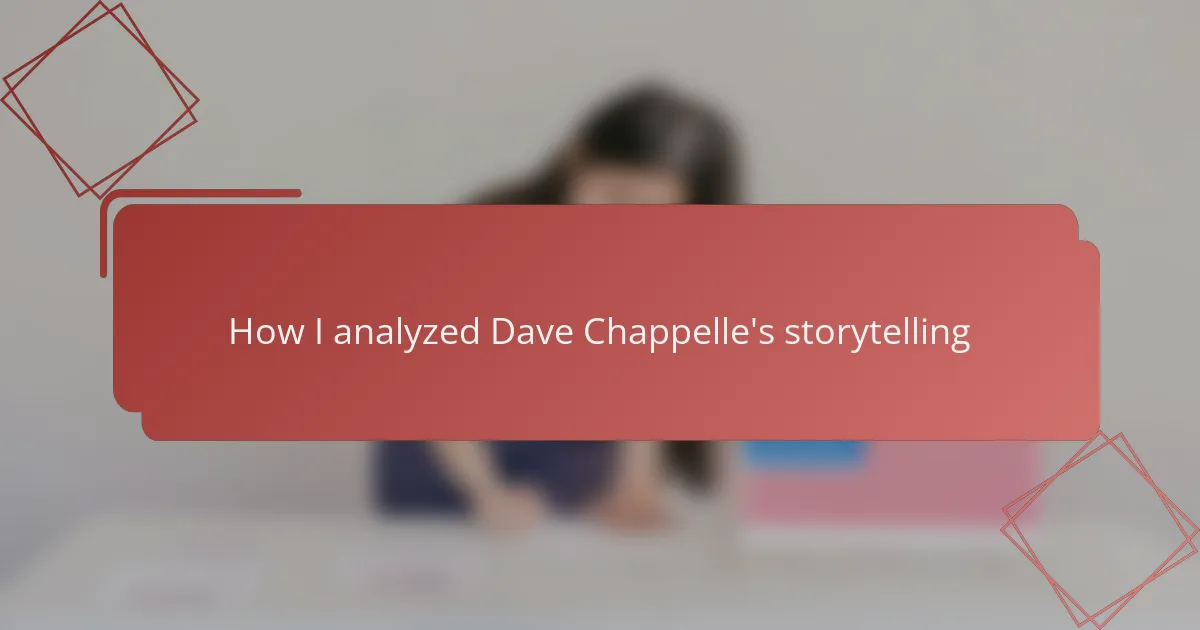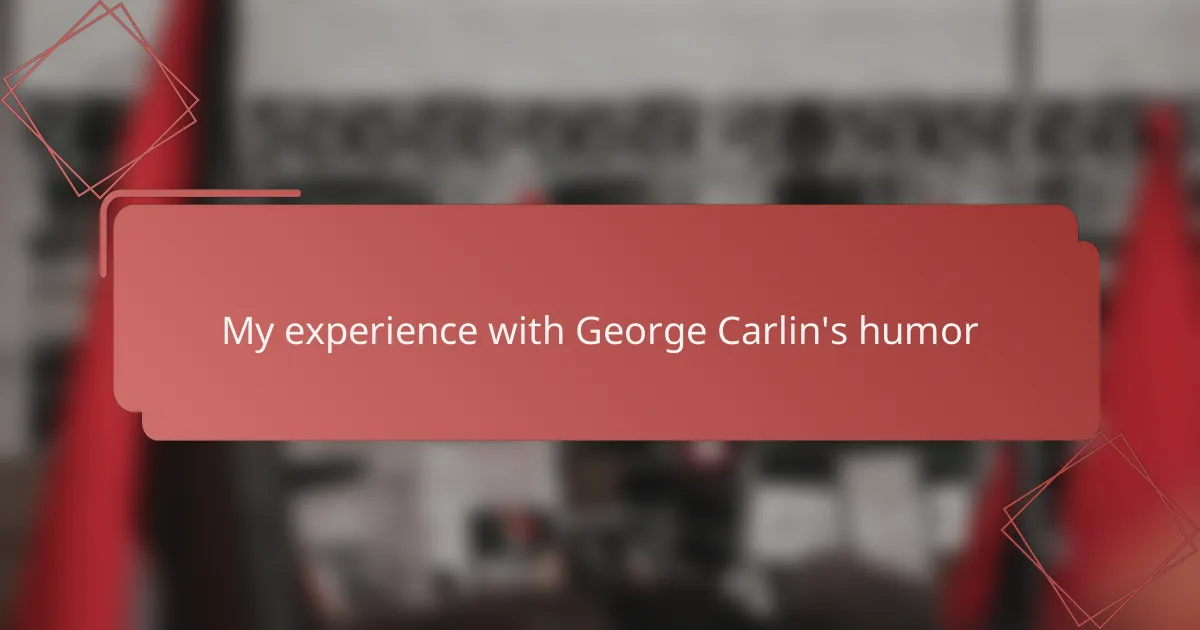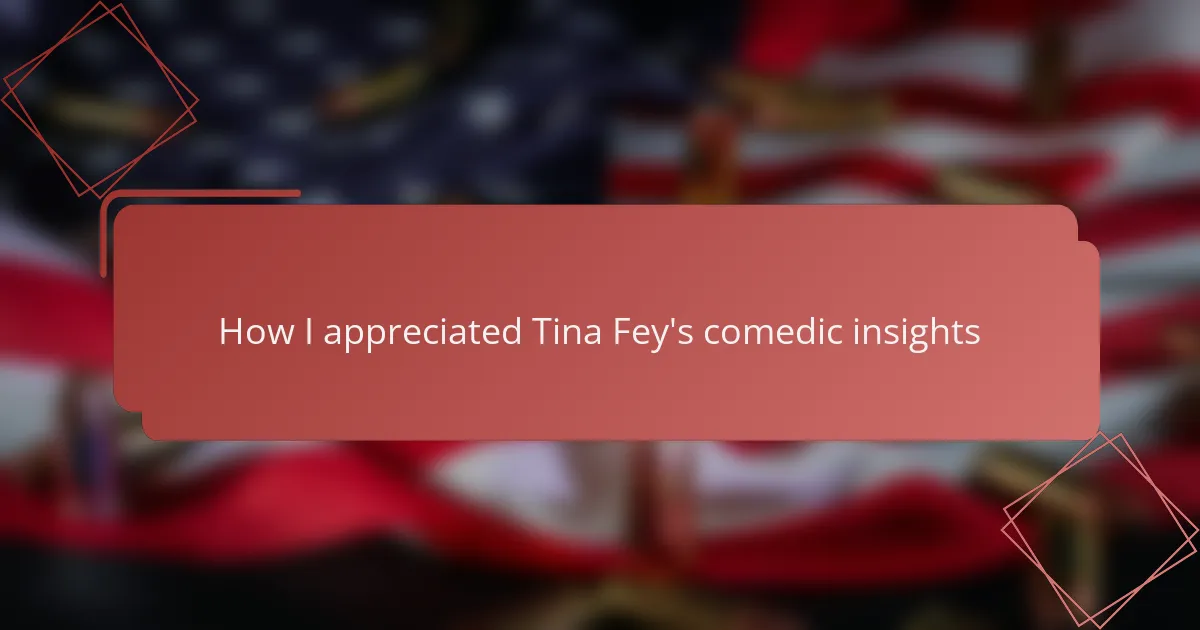Key takeaways
- Dave Chappelle’s political satire uses sharp wit and layered meaning to provoke critical thought and address societal issues.
- His storytelling features a conversational style, blending humor with personal anecdotes that make complex political themes relatable.
- Chappelle employs irony, impeccable timing, and emotional depth to enhance the impact of his satire, transforming comedy into a tool for introspection.
- Applying techniques such as irony and exaggeration in storytelling can make satire more engaging and thought-provoking for the audience.
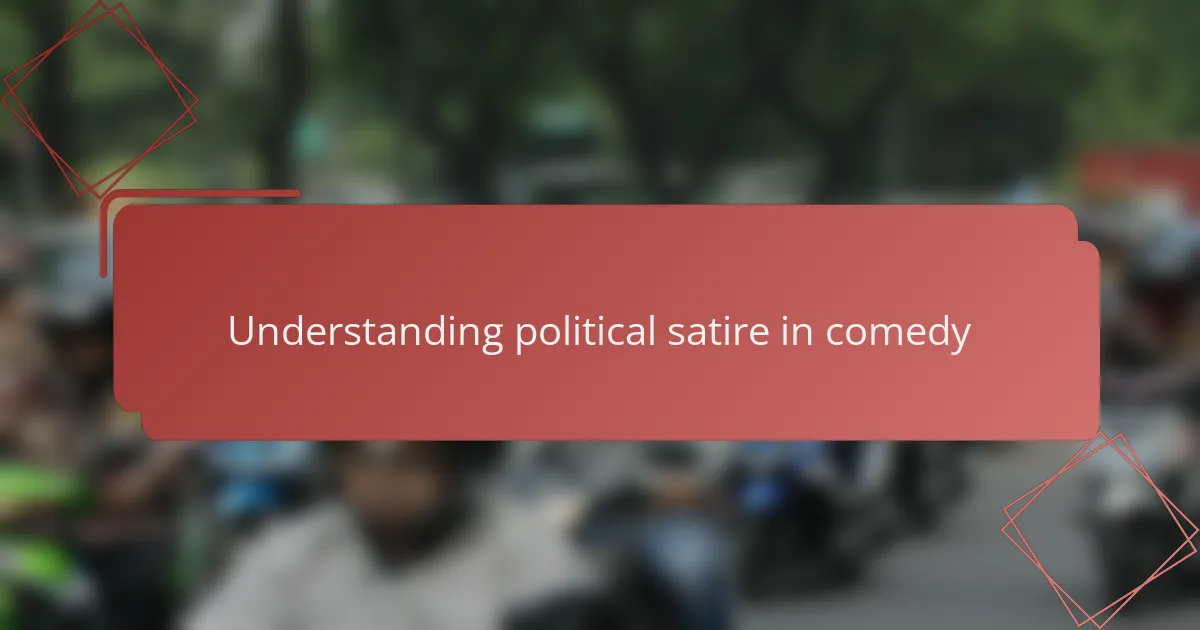
Understanding political satire in comedy
Understanding political satire in comedy requires recognizing how comedians like Dave Chappelle use humor to expose societal truths. I’ve noticed that his storytelling skillfully blends irony and wit to challenge political norms, making viewers both laugh and think critically. It’s this clever approach that separates impactful satire from mere comedy.
Comparing political satire to other comedic forms highlights why it resonates deeply. Political satire often carries a sharper edge and a purposeful message, whereas general comedy may focus more on entertainment without the same level of critique. In my experience, satire has the power to provoke reflection, which is why I find Chappelle’s work so compelling.
| Aspect | Political Satire |
|---|---|
| Purpose | Critique political systems and societal issues |
| Tone | Ironic, witty, often sharp |
| Emotional Impact | Provokes thought and sometimes discomfort |
| Example | Dave Chappelle’s commentary on race and politics |
| General Comedy | Pure entertainment, often observational |
| Tone | Light-hearted, casual |
| Emotional Impact | Primarily amusement and joy |
| Example | Situational humor in everyday life |
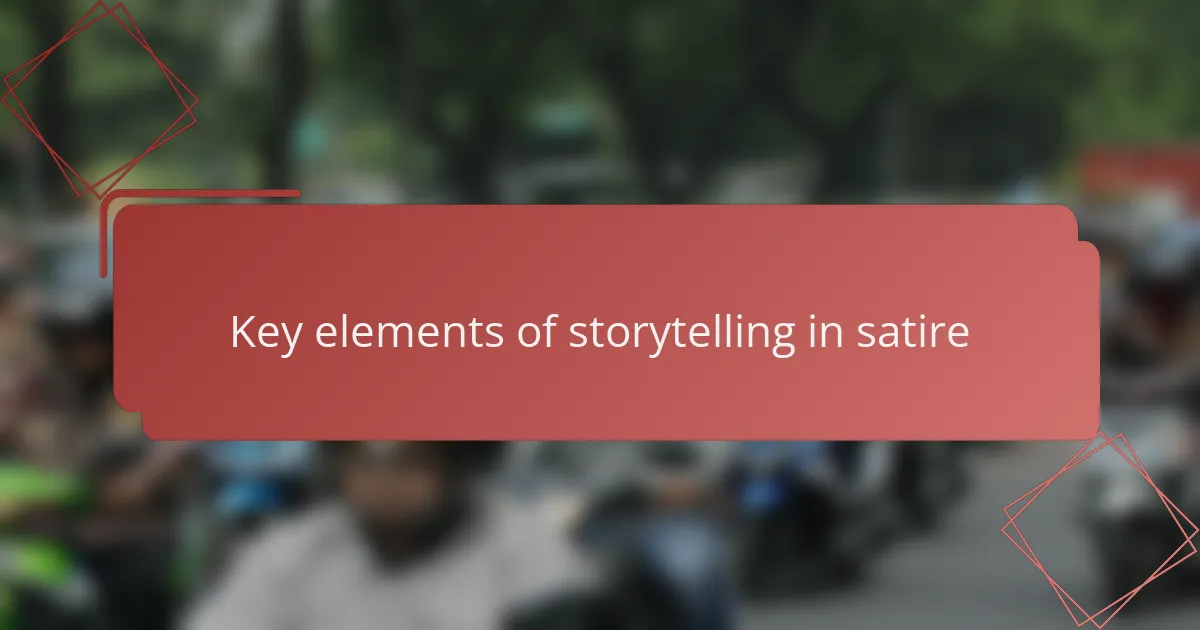
Key elements of storytelling in satire
Key elements of storytelling in satire often include sharp wit, layered meaning, and timing that hits just right. What struck me most about Dave Chappelle’s approach was how he balances humor with a serious message, making the audience both laugh and think deeply. In my experience analyzing his work, the precision in his narrative flow makes each joke land more powerfully, enhancing the satirical impact.
| Storytelling Element | Application in Dave Chappelle’s Satire |
|---|---|
| Wit | Uses clever wordplay and irony to expose political absurdities. |
| Layered Meaning | Combines humor with social critique, encouraging deeper reflection. |
| Timing | Delivers punchlines with perfect pacing to maximize audience engagement and impact. |
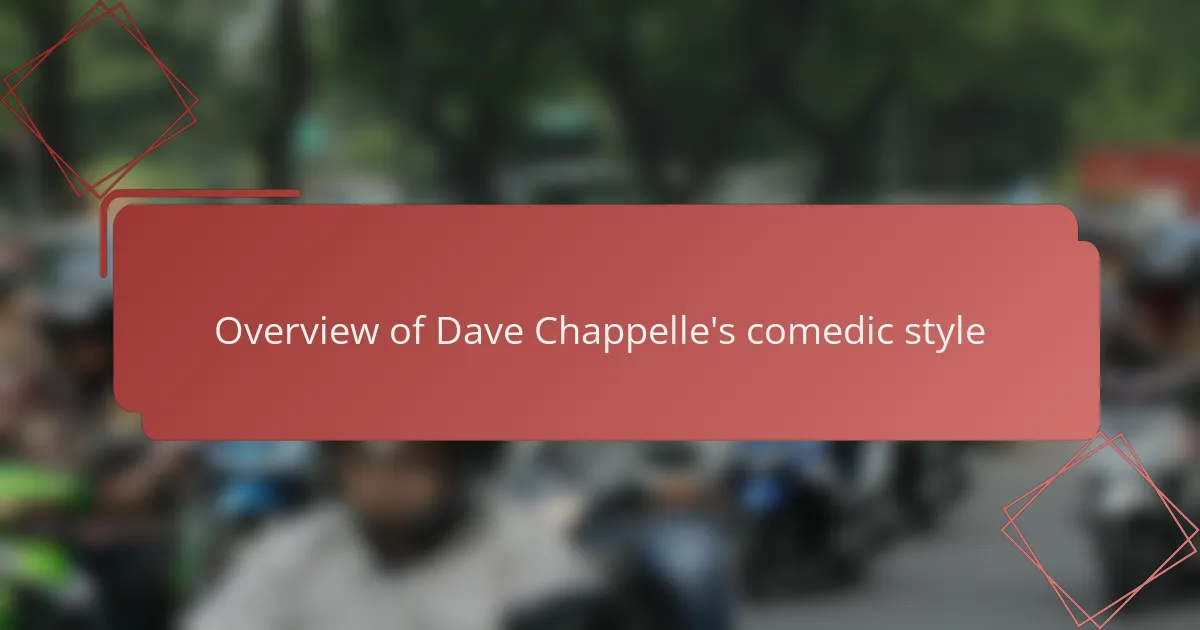
Overview of Dave Chappelle’s comedic style
Dave Chappelle’s comedic style strikes me as uniquely bold and deeply insightful, especially within the realm of political satire. His ability to navigate sensitive topics with a mix of sharp wit and raw honesty often left me both chuckling and reflecting on complex social issues. I remember watching one of his specials and being struck by how effortlessly he drew connections between personal experiences and larger political dynamics, making the commentary feel immediate and personal.
What stands out most to me is his layering of humor with social critique, creating a space where laughter doesn’t just entertain but challenges perspectives. Here are some key elements that define his style:
- Conversational storytelling that feels intimate and authentic
- Use of irony and sarcasm to highlight political contradictions
- Fearless tackling of controversial topics without losing nuance
- Sharp timing and rhythm that enhance the impact of his punchlines
- Blending personal anecdotes with broader cultural commentary
- Employing pauses and body language to build tension and release through humor
This combination makes his satire not only funny but thought-provoking, and I often find myself revisiting his material for a deeper understanding of the issues he addresses.
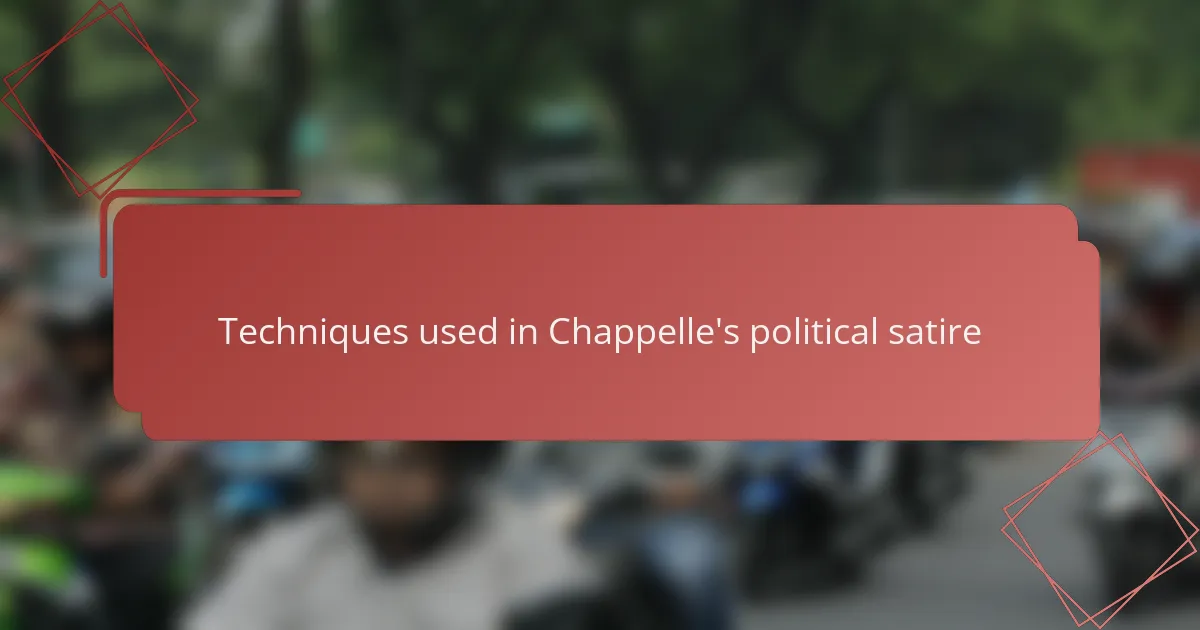
Techniques used in Chappelle’s political satire
One technique Dave Chappelle relies on heavily is irony—he sets up expectations only to flip them in surprising ways that expose political absurdities. I recall watching him dissect a controversial policy, and his ironic twists made me laugh out loud while simultaneously questioning my own assumptions. Have you ever noticed how irony in satire can be like a mirror, reflecting uncomfortable truths in a way that’s hard to ignore?
Another method he uses is layering his jokes with multiple meanings, which I find incredibly effective. This approach allows him to deliver a punchline that works on the surface as comedy but also drills deeper into social critique if you’re paying attention. It’s as if he’s inviting the audience to be detectives, catching the subtle nuances that reveal systemic issues beneath the humor.
Chappelle’s impeccable timing is something I often admire. His pauses and pacing create a rhythm that feels natural yet meticulously crafted to maximize impact. From my experience, perfect timing can make the difference between a joke that lands softly and one that provokes a profound reaction—sometimes shock, sometimes laughter, and often a mix of both. Doesn’t that elevate satire from mere entertainment to something much more meaningful?
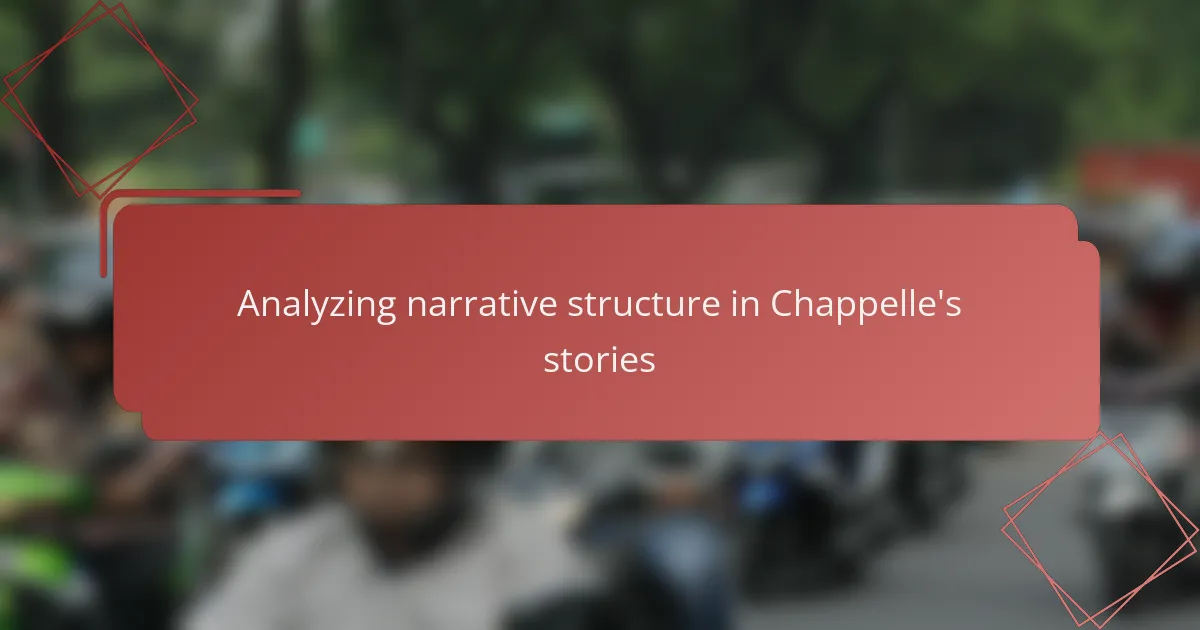
Analyzing narrative structure in Chappelle’s stories
Analyzing narrative structure in Chappelle’s stories reveals how he expertly balances setup, conflict, and punchline, creating a rhythm that commands attention. I’ve found his transitions feel almost conversational, drawing the audience in as if they’re sharing a candid moment. This pacing not only heightens comedic effect but also deepens the political satire, making serious themes more approachable.
| Narrative Element | Chappelle’s Approach |
|---|---|
| Setup | Detailed and relatable, often embedding current socio-political context |
| Conflict | Introduces tension through provocative observations or controversial topics |
| Punchline | Sharp, unexpected, blending humor with deeper satire |
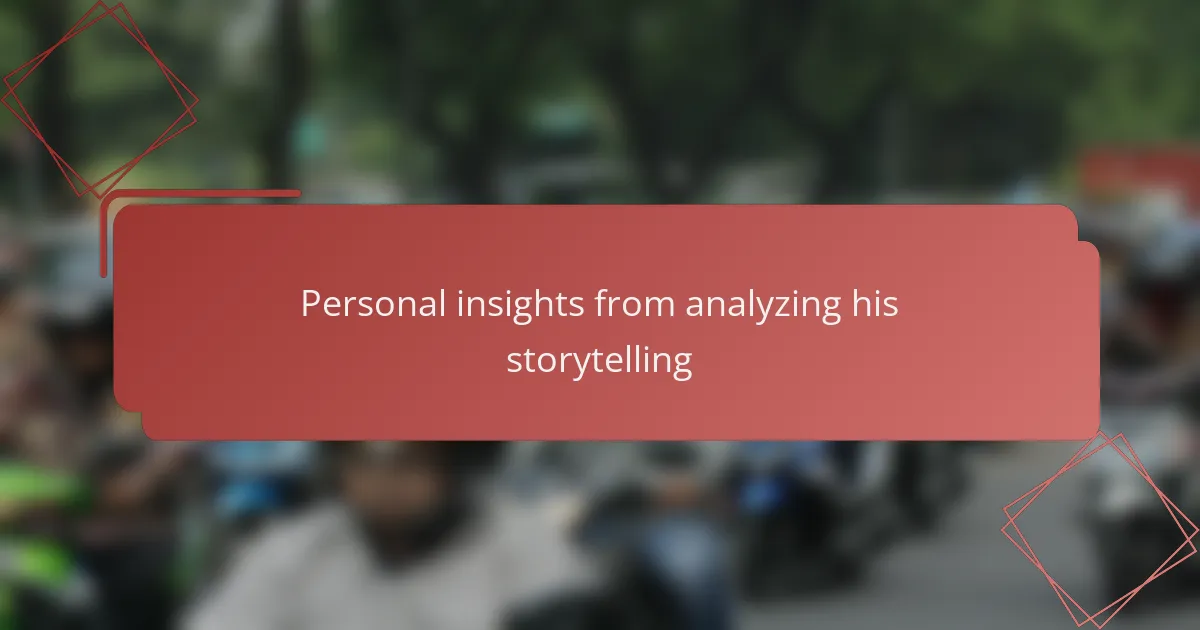
Personal insights from analyzing his storytelling
Delving into Dave Chappelle’s storytelling, I realized how effortlessly he draws me into his world by making complex political ideas feel personal and even intimate. There’s this uncanny way he mirrors my own thoughts and questions through humor, which made me pause and genuinely reflect on my beliefs. Have you ever caught yourself laughing while also wondering, “Wait, why haven’t I thought about it this way before?”
What struck me most was how his stories don’t just rely on punchlines but build an emotional rhythm that resonates beyond the immediate joke. I remember feeling a mix of amusement and discomfort as he unfolded an anecdote—this emotional layering made the satire hit harder because it connected on a human level. It’s almost like he’s guiding me through a conversation rather than performing a routine, which feels both refreshing and challenging.
Finally, analyzing his storytelling revealed the subtle art of balancing honesty with nuance. Chappelle often walks a tightrope, addressing sensitive issues without simplifying them, which I find incredibly skillful. It made me think: Can political satire really be effective without this kind of delicate precision? In his hands, it not only can but must be—turning comedy into a powerful tool for introspection and change.
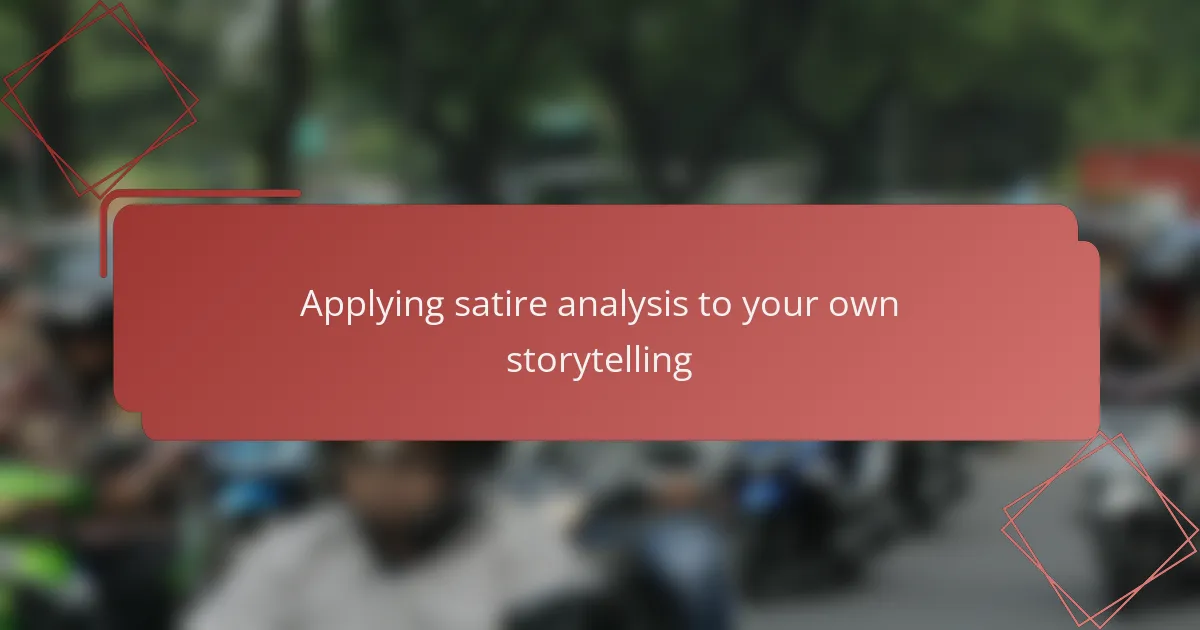
Applying satire analysis to your own storytelling
Applying satire analysis to your own storytelling helped me see the importance of layering humor with a clear message. When I tried to emulate Dave Chappelle’s style, I realized it’s not just about making people laugh but making them think critically about social issues.
One key detail I noticed is how Chappelle uses irony and exaggeration strategically. Incorporating these elements into my stories made my satire more impactful, allowing me to challenge perspectives while keeping my audience engaged.
| Element | How I Applied It |
|---|---|
| Irony | Used contradictory statements to highlight political hypocrisy, much like Chappelle’s approach in his skits. |
| Exaggeration | Amplified certain traits or situations to expose absurdities in political narratives. |
| Emotional Connection | Shared personal anecdotes to make the satire resonate more deeply with the audience. |
